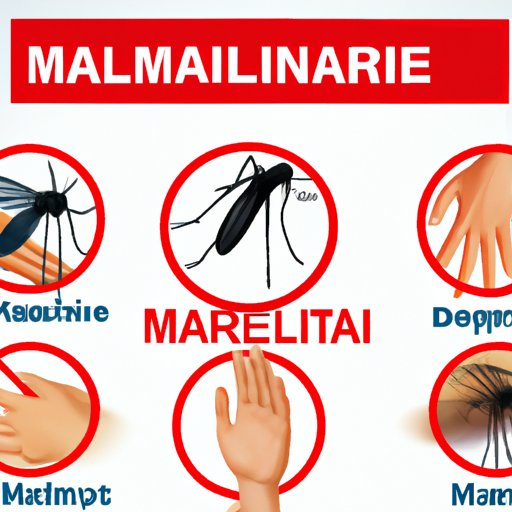
I. Introduction
Malaria is one of the most prevalent and deadly diseases in the world, affecting millions of people and causing thousands of deaths each year. Despite the availability of effective treatments and preventative measures, malaria remains a major public health problem in many parts of the world. This article aims to provide a comprehensive overview of how malaria is transmitted, its symptoms, diagnosis, treatment, and prevention methods.
II. How Malaria is Transmitted
Malaria is primarily transmitted through the bite of infected female Anopheles mosquitoes. These mosquitoes are most commonly found in tropical and subtropical regions, especially in areas with standing water such as swamps, rice paddies, and riverbanks.
When an infected mosquito bites a human, it injects malaria parasites into the bloodstream. These parasites then travel to the liver, where they multiply before re-entering the bloodstream and infecting red blood cells.
III. Risk Factors for Malaria
Living or traveling in high-risk areas where malaria is endemic is the most significant risk factor for contracting malaria. Other risk factors include not taking preventative measures such as using mosquito nets and insect repellents, and having a weak immune system due to other illnesses.
IV. Stages of Malaria Infection
After the initial mosquito bite, the malaria parasites enter the bloodstream and travel to the liver, where they multiply and mature for several days up to several weeks. This incubation period can vary depending on the type of malaria parasite and other factors such as the individual’s immune system.
After the parasites leave the liver, they enter the bloodstream and infect red blood cells, causing them to burst and release more parasites. This cycle of infection and destruction of red blood cells is responsible for the symptoms of malaria.
V. Symptoms of Malaria
The most common symptoms of malaria include fever, chills, headache, muscle aches, and fatigue. In severe cases, malaria can also cause organ failure, seizures, and coma. Pregnant women and young children are particularly vulnerable to severe forms of malaria.
Complications from malaria can also include anemia, kidney failure, and respiratory distress syndrome. It is important to seek medical attention if you experience any symptoms of malaria, especially if you have recently traveled to a high-risk area.
VI. Diagnosis and Treatment of Malaria
Malaria can be diagnosed through blood tests that detect the presence of malaria parasites. The treatment of malaria depends on the type of parasite and the severity of the infection. Antimalarial drugs such as chloroquine, artemisinin, and quinine are commonly used to treat malaria.
Severe cases of malaria may require hospitalization for close monitoring and intravenous drug administration. Prompt and effective treatment of malaria is crucial for preventing complications and reducing the risk of transmission to others.
VII. Prevention of Malaria
Preventing mosquito bites is the most effective way to prevent malaria. This includes using mosquito nets while sleeping, wearing long-sleeved clothing, and using insect repellents containing DEET or picaridin.
Prophylactic medication is also available for travelers to high-risk areas. This medication should be taken before, during, and after travel as recommended by your healthcare provider.
Eliminating standing water where mosquitoes breed, such as in flower pots, bird baths, and gutters, can also help prevent the spread of malaria.
VIII. Conclusion
Malaria is a serious disease that poses a significant risk to public health, especially in tropical and subtropical regions. Understanding how malaria is transmitted, its symptoms, and how it can be treated and prevented is crucial for reducing the global burden of malaria. Be sure to take preventative measures and seek medical attention if necessary to protect yourself and others from this deadly disease.




